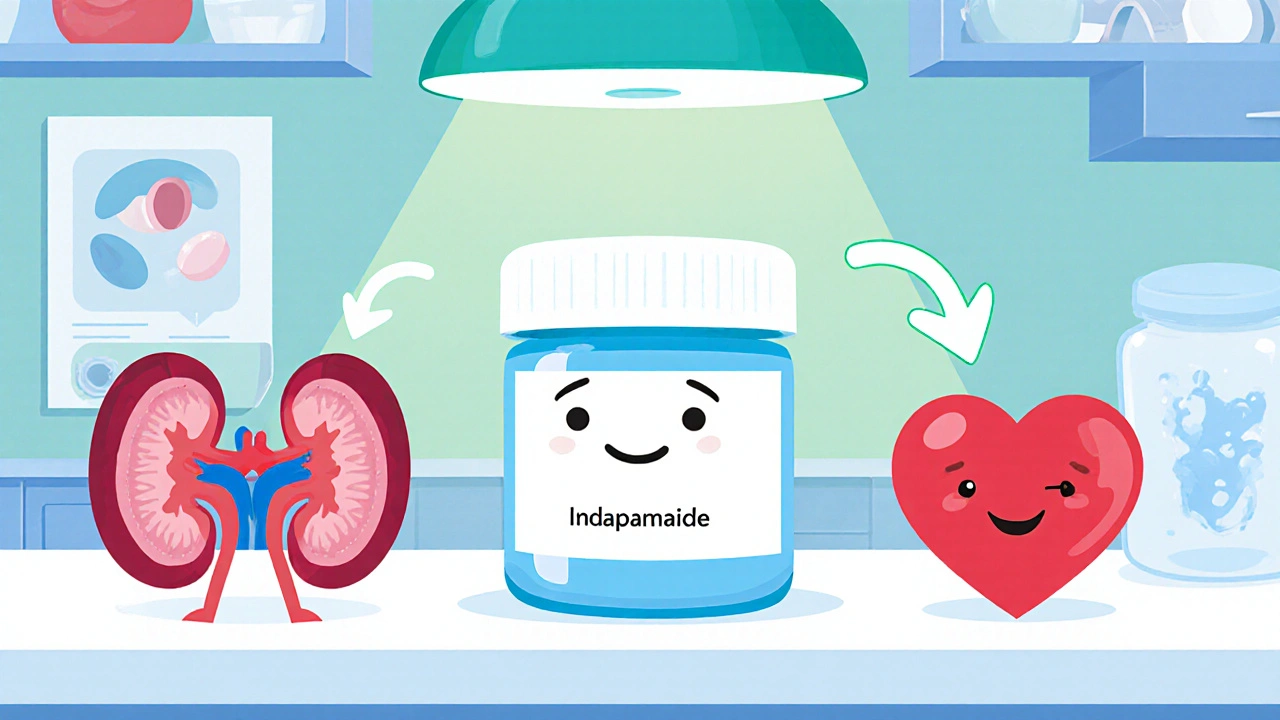When dealing with Indapamide side effects, the unwanted reactions that can happen while using the thiazide‑like diuretic indapamide. Also known as indapamide adverse reactions, it is closely linked to Indapamide, a medication that treats hypertension and works as a diuretic.
Indapamide lowers blood pressure by helping the kidneys flush excess sodium and water. That same mechanism can disturb electrolytes like potassium, sodium, and magnesium. In plain terms, the drug’s primary action (reducing fluid volume) often triggers secondary effects (electrolyte imbalance). The body’s response creates a chain: Indapamide side effects encompass electrolyte disturbances, gout flare‑ups, and photosensitivity. Knowing this chain helps you spot problems early.
First up, low potassium (hypokalemia). Because indapamide pushes sodium out, potassium follows, and levels can drop. Symptoms may include muscle cramps, fatigue, or irregular heartbeat. Next, high uric acid can lead to gout attacks—especially in patients with a history of joint pain. The drug reduces the kidney’s ability to clear uric acid, so gout‑prone folks often feel a sudden sting in the big toe.
Skin reactions are another frequent story. Some users develop a rash or become unusually sensitive to sunlight (photosensitivity). The exact chemistry isn’t fully mapped, but it’s thought that indapamide alters skin cell protection mechanisms, making UV light more damaging.
Blood sugar spikes can surprise diabetics. Indapamide may interfere with insulin’s effectiveness, nudging glucose levels upward. If you already monitor blood sugar, keep a tighter eye on readings after starting the medication.
Finally, a less common but serious issue is a sudden drop in blood pressure (orthostatic hypotension). When you stand up, you might feel dizzy or even faint because the drug’s fluid‑removing action lowers circulating volume too quickly.
Each of these reactions stems from a core principle: diuretic therapy changes the body’s fluid and electrolyte balance, which in turn influences other systems like joints, skin, and metabolism. Recognizing the cause‑effect pattern lets you intervene before a symptom escalates.
Practical steps? Regular lab checks are a must. A basic panel—potassium, sodium, magnesium, uric acid, and glucose—covers most bases. If any number drifts, your doctor can tweak the dose or add a supplement. For example, a low‑potassium reading often leads to a potassium‑rich diet or a mild supplement.
Stay hydrated, but avoid over‑drinking water that can dilute electrolytes further. Pair indapamide with a diet rich in leafy greens, bananas, and beans to naturally boost potassium. If gout is a risk, limit purine‑rich foods like red meat and shellfish, and discuss prophylactic meds such as allopurinol with your physician.
Sun protection is simple: wear sunscreen, hats, and UV‑blocking clothing during outdoor activities. If you notice a rash that worsens with sun exposure, pause the medication and seek advice—sometimes a switch to another antihypertensive works better.
Monitoring blood pressure at home helps catch orthostatic drops early. Measure your reading while sitting, then stand after a minute and measure again. A significant dip signals the need for dose adjustment.
Beyond the physical side effects, remember the emotional side too. Feeling tired or having frequent bathroom trips can affect daily mood and productivity. If the drug’s impact feels overwhelming, talk to your healthcare provider. Often, a small dose change or a different timing (like taking it at night) can make a big difference.
In short, Indapamide side effects are predictable when you understand the drug’s core action. By keeping an eye on electrolytes, uric acid, skin response, glucose, and blood pressure, you can stay ahead of most problems.
Below you’ll find a curated list of articles that dig deeper into each of these topics—comparisons with other diuretics, detailed management tips, and patient stories that illustrate real‑world solutions. Dive in to get the full picture and equip yourself with the knowledge to use indapamide safely and effectively.
Posted by
Paul Fletcher
9 Comments

Learn the full range of Indapamide side effects, from common to rare, how to manage them, and when to seek medical help.
read more